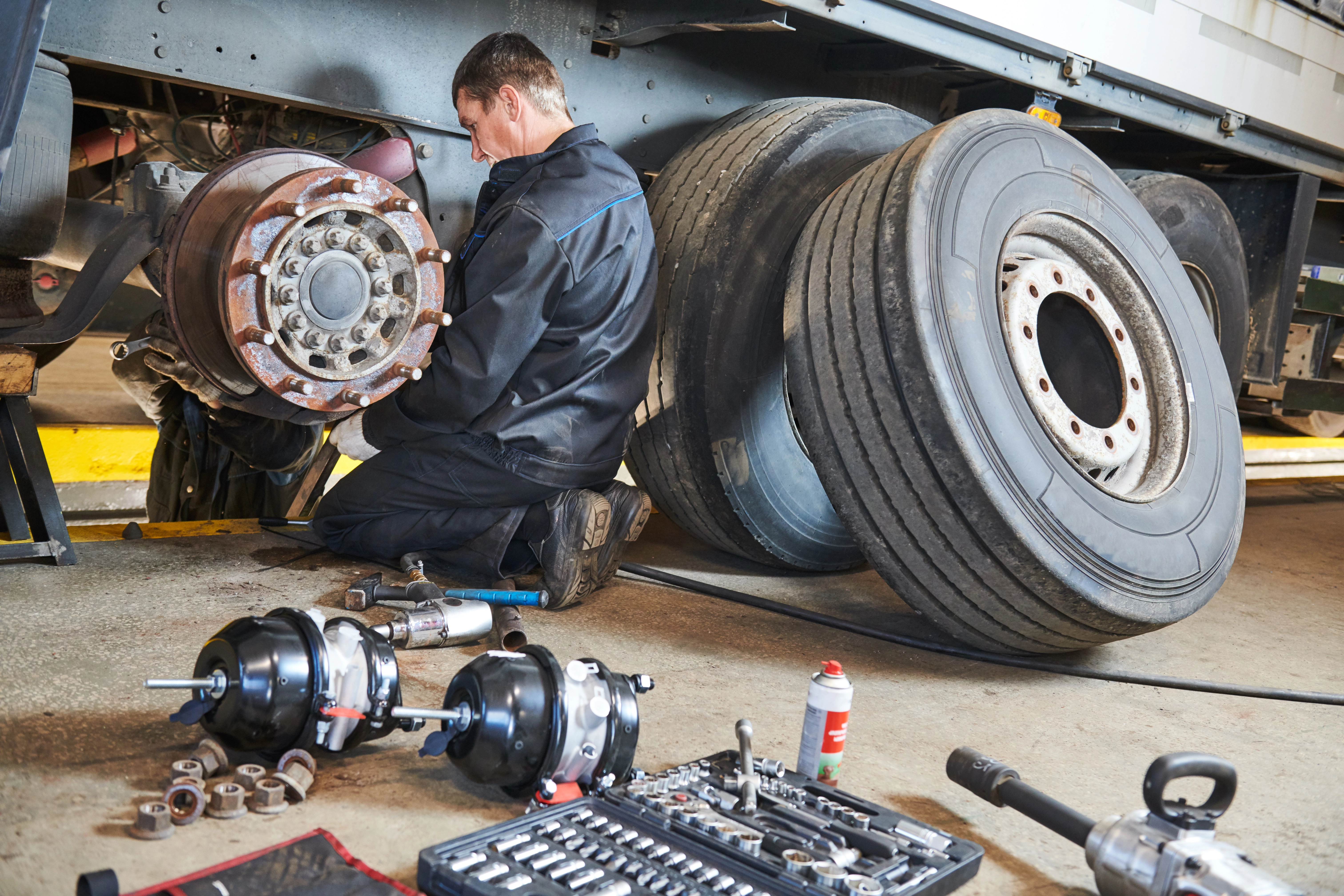Tips to Have Successful Roadside Inspections

Navigating the intricacies of roadside inspections and CSA scores can be daunting for motor carriers. However, while they might seem intimidating, inspections and scores can be opportunities for improvement and growth. Understanding their impact is crucial for long-term success in the industry.
Roadside Inspections and CSA Scores
With 30-plus years in the industry, I understand roadside inspections and CSA scores are tied together and can affect drivers and motor carriers in many ways. Although many people think of them negatively, understanding the past can help improve the future. Identifying issues can help clarify where to focus so you can work to reduce violations and crashes and improve scores.
Common Violations
It can also be helpful to look at the top violations others receive from roadside inspections.
In 2023, Commercial Vehicle Safety Alliance (CVSA) International Road Check inspectors found that 81% of inspected commercial motor vehicles and 94.5% of drivers did not have out-of-service (OOS) violations. Here are the most common vehicle and driver violations.
Top 5 Vehicle OOS Violations
- Brake systems (4,412 violations)
- Tires (3,368 violations)
- Defective service brakes (2,468 violations)
- Cargo securement (2,171 violations)
- Lights (2,015 violations)
Brake, light, and tire violations are common among fleets, so I collectively refer to them as the BLT sandwich of truck enforcement. Focusing on these areas will often help improve CSA scores.
Driver OOS Violations
- Hours of service (2,169 violations)
- False logs (1,392 violations,
- Other (487 violations)
- Canceled/revoked license (416 violations)
- No medical card (241 violations)
Is there a pattern of violations in your fleet that can be identified and addressed? If so, be your own harshest critic. I often compare trucking to paddling a canoe upstream—the moment you stop, you start to go backward. Work to understand your fleet history, identify areas to improve, and fix issues before they are found during roadside inspections or at a crash.
Turning Roadside Inspections Into A Positive Experience
Here are 7 ways to turn roadside inspections into a positive experience:
1. Understand roadside inspections and CSA scores
Compliance, Safety, Accountability (CSA) is the safety compliance and enforcement program of the Federal Motor Carrier Safety Administration (FMCSA) that holds motor carriers and drivers accountable for their role in safety. CSA affects motor carriers, including owner-operators, by identifying those with safety problems to prioritize them for interventions such as warning letters and investigations. CSA affects drivers because their safety performance and compliance impact their safety records and, while working for a carrier, will impact that carrier's safety record.
Your safety data appears online in FMCSA’s Safety Measurement System (SMS). FMCSA updates the SMS monthly with data from roadside inspections, including driver and vehicle violations, crash reports from the last two years, and investigation results. The SMS considers:
- The number of safety violations and inspections
- The severity of safety violations or crashes
- When the safety violations occurred, with recent events weighted more heavily
- The number of trucks operated and the number of vehicle miles traveled
- Acute and critical violations found during investigations
FMCSA organizes SMS data into seven Behavior Analysis and Safety Improvement Categories (BASICs): unsafe driving, crash indicator, hours-of-service compliance, vehicle maintenance, controlled substance/alcohol, hazardous materials compliance, and driver fitness.
The CSA database includes only violations while drivers were operating commercial vehicles. If you are driving under a carrier’s DOT number, your violations will be assigned to that carrier.
Inspections, whether the result of a typical roadside inspection or the result of a crash, are bound to make some drivers and fleet managers a little nervous. Often, inspections can seem like a nuisance, and drivers and motor carriers may even feel targeted.
2. Develop a process to make sure your documentation is ready for inspection
Registration, annual vehicle inspections, insurance, driver's licenses, medical cards, and other documentation must be maintained and valid. Ensure your drivers understand and are prepared to explain leased vehicles or other special circumstances. If enforcement officers cannot understand what is happening, they are far more likely to write a citation.
3. Become inspection ready
One of the easiest but often overlooked items is training mechanics and drivers on performing a proper driver vehicle inspection report (DVIR). I have visited motor carriers that were adamant their equipment was in good mechanical condition, and they had no idea why they were getting picked on by the DOT. However, upon our mutual inspection, we discovered worn brake linings, defective or missing lights, bad tires, and even brake hardware kits hanging out of a wheel—all easily visible. The Commercial Vehicle Safety Alliance (CVSA) handbook is a good training guide for proper inspection. The North American Standard Inspection Level 1 will prepare you for most of the other levels of inspection discussed here.
Some fleets find that auditing ensures things get done. In these cases, a small percentage of the fleet may have a visible tag or ribbon placed on areas such as the oil dipstick, slack adjuster, gladhand, or wheel stud. When found by the driver during the inspection, the driver receives positive reinforcement. If not found, the manager knows the driver did not properly inspect the vehicle, which is an opportunity for driver coaching or training.
When a troubled fleet begins enforcing DVIRs, this process may be new to both drivers and mechanics. As a result, a functional intake process, where the maintenance shop can repair identified safety defects before releasing vehicles back into service, must exist. If not, frustration may occur, and drivers may start pencil-whipping the DVIRs.
4. Maintain compliance with regulations
Ensure your driver is trained and prepared to provide current records, discuss the method used, and answer HOS questions during a roadside stop.
5. Comply with traffic regulations
Train your drivers to avoid bring attention to their driving by obeying traffic signs, wearing seat belts, avoiding distracted driving, and not exceeding posted speeds.
6. Empower your employees
Many companies do not train experienced drivers. Regardless of experience, training is crucial when onboarding a new driver. If you do not train or empower your drivers to be successful for themselves, it is doubtful they can be successful for your company.
7. Setting goals for improvement
You can obtain your score at the USDOT website by entering your USDOT number and PIN. You can request a PIN from USDOT if you do not have one.
I recommend posting your scores. For example, if your unsafe driving or vehicle maintenance is hovering around 80, set a goal of 50 and make and execute a plan to reach that goal. Successful plans often include training employees and auditing to determine if you are achieving the results you want for your company.
A Culture of Safety and Excellence
Understanding the underlying issues affecting your fleet performance is crucial. By identifying patterns of violations, focusing on key areas like brakes, tires, and driver hours of service, and implementing proactive strategies, you can significantly enhance your CSA scores and overall safety record.
Remember, safety and compliance are not just regulatory requirements—they are the cornerstones of a successful and sustainable business in the transportation industry. Embrace a proactive mindset, empower your employees through training, and set achievable goals for continuous improvement. By doing so, you can mitigate risks associated with roadside inspections but also build a culture of safety and excellence that resonates with your customers, stakeholders, and drivers. Stay informed, stay prepared, and always strive for excellence in safety and compliance.
An insurance company that cares about you and insuring the things you wish to be insured.
Get a Quote> Find an Agent>

